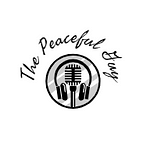Crowdsourcing in the Healthcare Industry
Though crowdsourcing has recently gained popularity in many industries across the world, it’s not necessarily intuitive for it to be part of healthcare. However, crowdsourcing has begun to have a notable impact in the health sphere, such as in patient diagnosis, engagement, and more. To start, let’s understand and differentiate crowdsourcing from outsourcing.
Crowdsourcing vs. Outsourcing
A common misconception is that crowdsourcing and outsourcing are the same thing, when in fact they are unrelated. Crowdsourcing refers to the use of the public, such as a business’ audience, in order to achieve a certain end. The word “crowdsourcing” was first used in 2006 and in the context of Flickr. No longer used that exclusively, crowdsourcing refers to any collective effort to achieve an end. For instance, the popular platform GoFundMe uses crowdsourcing techniques in order to raise money for worthy causes. Oftentimes, companies can use crowdsourcing to ideate for a new product or product name ideas, such as the chip company Frito Lay with new chip flavor contests. Thus, crowdsourcing is applicable across different industries and in different ways. On the other hand, outsourcing refers to a firm’s decision to contract out part of its business needs rather than doing it themselves. For example, a computer manufacturer may outsource its needs for different raw materials or computer parts. Another example is a business that outsources its software needs to a software firm. Outsourcing tends to be cost-efficient by allowing firms to focus on what they do best, while, in this case, allowing the software experts to do what they do best. Outsourcing, like crowdsourcing, can have a place in the medical industry. For instance, doctors should consider the pros and cons of outsourcing their marketing.
Impacts of Crowdsourcing
Some of the main areas of influence for crowdsourcing in the medical industry are patient diagnosis and treatment, data analysis, patient engagement, and new ventures. Crowdsourcing, like outsourcing, can be a worthwhile way for firms to access creativity and different perspectives outside their own ranks.
Patient Diagnosis and Treatment
Patient diagnosis and treatment is a popular method of crowdsourcing in the medical industry. It can be used with “medical mysteries” when doctors working with the patient(s) in question are at a loss for what the condition and necessary treatment may be. Furthermore, doctors often have access to databases and forums of electronic health records that can facilitate this kind of doctor-doctor exchange. When the patient’s condition is critical, oftentimes this exchange of information that wouldn’t be possible without the use of crowdsourcing is life-saving.
Patient Engagement
One of the most important roles crowdsourcing can play in the current health environment is informing patients of their medical information and conditions. This can empower them to be involved in making decisions regarding their health. Studies have shown that informed patients lead to better health outcomes, so this is a vital role that crowdsourcing can play. An example of crowdsourcing in this way is with platforms like PatientsLikeMe. PatientsLikeMe is a network of more than 400,000 patients from across the world. Members are able to connect with each other and share information about their experiences, conditions, and treatments. This platform can be particularly useful with patients who want to seek out other patients who have the same condition, disease, or ailment in order to share their stories.
New Ventures
Another application of crowdsourcing in the medical sphere is with new ventures. Similar to GoFundMe, doctors or researchers use crowdsourcing to fund their research into diseases, cures, conditions, trial treatments, and more. Since medical research is extremely costly, crowdsourcing can work to offset some of these costs. Furthermore, crowdsourcing can also be used to generate ideas for marketing campaigns against obesity or smoking. It can even be used to generate ideas for new ways to combat these issues as well, from people who have experienced them. This is a way to gain a new perspective that doctors and researchers may not inherently have. What is most exciting about crowdsourcing in the healthcare industry is its unlimited, untapped potential. We have merely scraped the surface of what crowdsourcing can accomplish. What if the next innovative idea for fighting cardiovascular disease, obesity, or any other ailment came from crowdsourcing? Crowdsourcing’s implications in the areas of new ventures, patient engagement, diagnosis and treatment, and more show that it can truly revolutionize how we view the medical industry.
